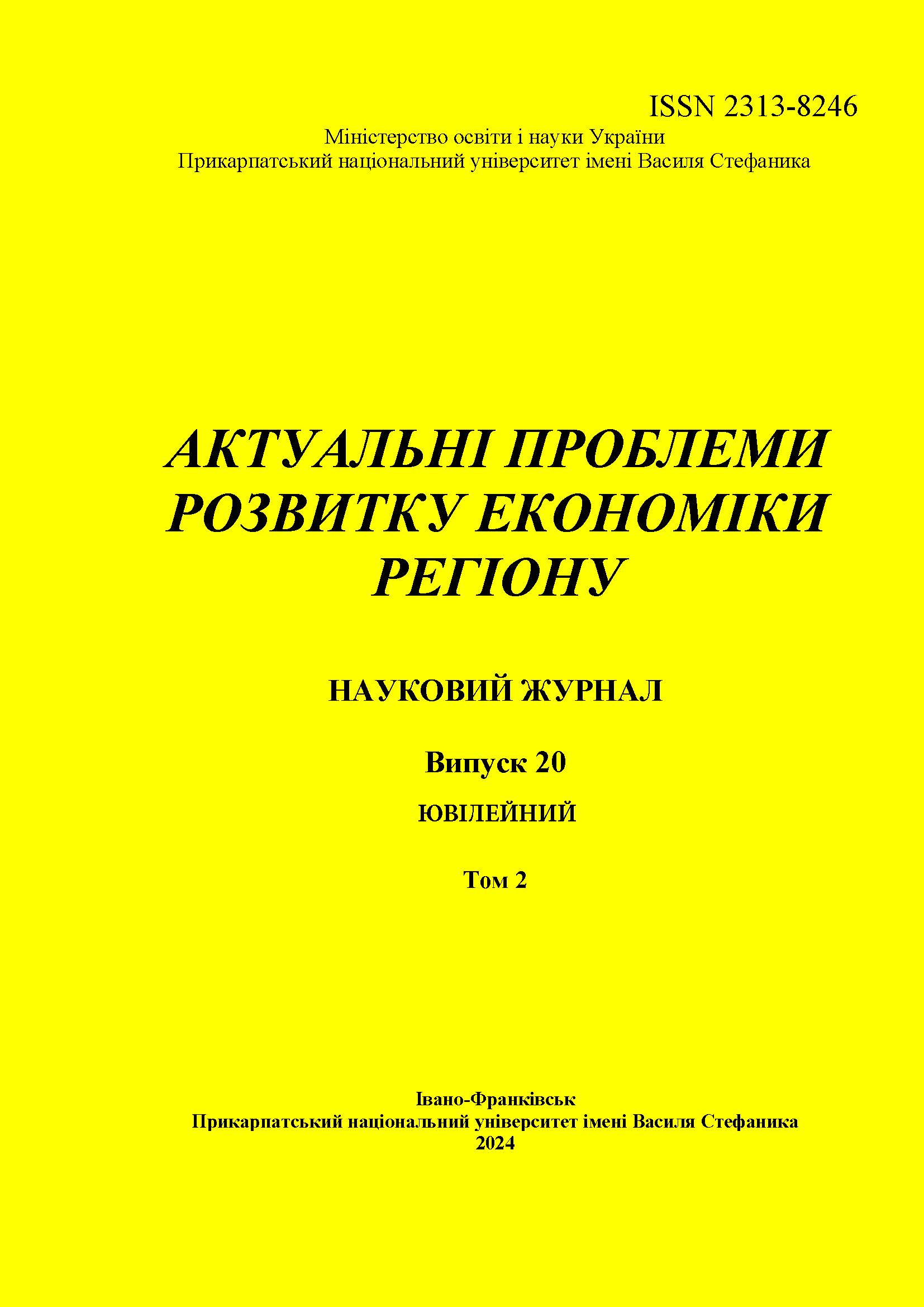FORMATION OF THE STRATEGY OF BANKING INSTITUTIONS IN UKRAINE IN THE CONDITIONS OF THE FINANCIAL MARKET DIGITALIZATION AND MACROECONOMIC INSTABILITY
DOI:
https://doi.org/10.15330/apred.2.20.267-278Keywords:
financial market, banking institution, strategy, digitalization, macroeconomic, financial-economic security, riskAbstract
In the article, a brief historical overview of the emergence of the term “strategy” is provided, old and new approaches to the definition of the concept of strategy are applied, and stages of strategic formation of banking institutions in the global banking environment are presented. Modern scientific approaches to defining the concept of the strategy are highlighted. The author’s definition of the strategy of banking institutions in Ukraine is presented. The main components of the banking strategy, namely the general strategy, operational strategy and the strategy of separately defined strategic tasks, are presented, their role in the formation of the priorities of the banking strategic development is determined. The relationship between the strategy of banking institutions and the goals of the bank and the needs of economic agents is investigated. The categories of banking institutions that have started three stages of the digitalization development are identified, such as: Classic banking, Digital banking, Figital banking in the financial sector of Ukraine, and the stages of growth of digital technologies in the financial markets of Ukraine and the EU are graphically shown. In the article, the impact of digital technologies on the financial market of Ukraine is shown, and the components of digital support for financial transactions are identified, in particular, the main ones are robotization of digital assistants and creation of robotic speaker programs, cyber security systems for online payments, tokenization of transactions, processing of large amounts of customer data, introduction of cloud servicess, technologies of the paperless electronic signature, artificial intelligence, fog computing of financial flows, next generation digital mobile technologies with new data encryption principles. The digital technologies used in the formation of the strategy of banking institutions in Ukraine are grouped. The main levels of integration of banking institutions in Ukraine into the international financial system were also determined. The integration of the innovative digital financial products at different stages of strategic planning was analyzed. In the article, the influence of globalization processes on the formation of the strategy of banking institutions in Ukraine are studied, and the main processes of financial and economic integration between the world and domestic banks were identified.
References
Karlef, B. Management from A to Z. Concepts and models. Kharkiv, Stockholm School of Economics, 2006.
Goldshtein, G.Ya. Strategic management: study guide. 2nd. еd. Donetsk, Publishing House of TRTD, 2003.
Lebid, O.V. “Main approaches to determining the essence of the concept "strategy"”. Researchgate, www.researchgate.net/publication/334233315_Osnovni_pidhodi_do_viznacenna_sutnosti_ponatta_strategia Accessed 25 Apr. 2024.
Primak, T.O. “Positioning strategies in marketing theory.” Marketing and innovation management, no. 1, 2012, pp. 13–20.
Hank, J. Business forecasting. Luhansk, Williams, 2003.
Porter, M. International competition. Luhansk, Williams, 2003.
Smolin, I.V. Strategic planning of organization development. Kyiv, KNEU, 2004.
Dovgan, L.E., Karakai, Yu.V., Artemenko, L.P. Strategic management: study guide. Kyiv, Center for Educational Literature, 2009.
Pochenchuk, H.M. “Financial technologies: development and regulation.” Economy and society, no. 13. 2017, pp. 1193-1200.
Seisebayeva, N.G., and T.O. Veremeychyk. “Strategic management of a commercial bank in modern conditions of an unstable external environment.” Bulletin of Odessa National University. Series: Economy, vol. 20, issue 4, 2015, pp. 209-212.
Dubyna, M.V. “Peculiarities of building a risk-controlling system in banking institutions. ” Financial research, no.2(7), 2019, fr.stu.cn.ua/ Accessed 25 Apr. 2024.
Dubyna, M.V., Sadchykova, I.V., and I.O. Seredyuk. “Conceptual approaches to increasing the level of security of the banking payment environment of Ukraine. ” Business Inform, no. 3, 2020. pp. 349 – 359.
Tsyrulyk, S.V. “Trends in the development of fintech services on the world and domestic markets of financial services.” Business Inform, no. 10, 2018, pp. 127–133.
Stetsko, M.V. “The financial market of Ukraine in the context of global competitiveness.” Economic analysis, vol. 25, no. 1, 2016, pp. 158–168.
Pavlenko, L.I. “Financial technologies: development and regulation.” Economy and society, no. 13, 2017, pp. 1193–1200.
Volosovich, S.V. “Dominants of technological innovations in the financial sphere.” Economic Bulletin of the University, issue 33(1), 2017, pp. 15–22.
Aksyonova, T.S. “Actual threats and risks of the bank's financial security and the role of the state in ensuring it.” Investments: practice and experience, no. 17, 2021, pp. 130–138.
Downloads
Published
How to Cite
Issue
Section
License

This work is licensed under a Creative Commons Attribution-NonCommercial-NoDerivatives 4.0 International License.
- Authors retain copyright and grant the journal right of first publication with the work simultaneously licensed under a Creative Commons Attribution NonCommercial NoDerivs 4.0 Unported License that allows others to share the work with an acknowledgement of the work's authorship and initial publication in this journal.
- Authors are able to enter into separate, additional contractual arrangements for the non-exclusive distribution of the journal's published version of the work (e.g., post it to an institutional repository or publish it in a book), with an acknowledgement of its initial publication in this journal.
- Authors are permitted and encouraged to post their work online (e.g., in institutional repositories or on their website) prior to and during the submission process, as it can lead to productive exchanges, as well as earlier and greater citation of published work (See The Effect of Open Access)


